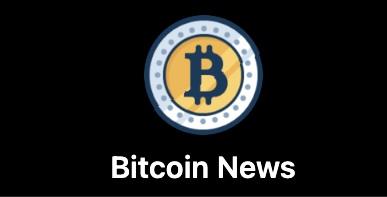Enquires@newsofbitcoin.com
Disclosure: The views and opinions expressed here belong solely to the author and do not represent the views and opinions of crypto.news’ editorial.
The recent boon for Bitcoin’s price has given the market much reason to be happy. This year and the last one, the market has surprised us with an unexpected start-of-year rally. Traders and investors will be hoping this becomes an annual tradition. But while the consequences for this are almost universally positive for the digital asset sector, other areas offer true disruptive potential.
Compared to Bitcoin’s positive price movement, real-world asset (RWA) tokenization growth is a paradigm shift in how we think about all assets. And it is an opportunity not limited to direct blockchain participants. Both traditional finance and decentralized finance stand to benefit equally from this trend, as over 2% of the global money supply is expected to be in web3 by 2028 via stablecoins.
Stablecoins, however, are only a primitive version of what real-world asset tokenization could mean. We’ll see more and more kinds of real-world assets going onchain as the market warms up to other forms of tokenization. This process will spark a new wave of innovation in defi and open new markets for TradFi.
Boring is important, too
Crypto assets are the first use case of what is possible with digitally represented value. There is no limit to the types of value that can be represented onchain. On top of tokenized assets’ broad applicability, they offer faster settlements, greater access, and lower transaction costs.
Tokenized treasury bills are a great example of this emerging trend. They have quickly turned into an approximately $850 million market, with TradFi firms such as Franklin Templeton, the same company that recently filed for an ETH ETF, taking the lead with a $332 million share of the market. Meanwhile, defi projects like Ondo Finance also make way with a short-term US government bond fund that accounts for $153 million. It happened partly because of dwindling defi yields and some investor interest earlier in 2023 for more traditional financial instruments such as bonds.
To some in defi, this might sound boring—but boring is important, too. At their best, digital assets can provide value to multiple kinds of investors, including the more conservative sectors. Treasury bills are just the first foot in the door.
Tokenization and its benefits
Fundamentally, tokenization is about digitally representing value on the blockchain. Many real-world assets would benefit from its improvements.
Distribution. Being fully digital means tokenized assets are accessible to more investors through more channels. This includes all the ones we have started to get used to in crypto: CEXs directly accessible to users, DEXs, a more traditional broker model, and pure peer-to-peer exchanges. Being fully digital means that tokenized assets can benefit from fractionalization, which splits the assets into smaller pieces that are more affordable and liquid for retail investors.
Composability. Tokenizing real-world assets allows them to benefit from defi’s infinite composability. They become financial building blocks that developers can combine creatively as part of an open, programmable financial system. In the past, this creativity only applied to native crypto assets like utility tokens, stablecoins, and NFTs. Now, it can shape real-world assets, too.
As more assets tokenize, the improved distribution and composability will enable new onchain financial instruments. It also points to fresh defi protocol designs backed by real-world assets, perhaps overcoming the need for over-collateralization.
The possibilities are endless and tremendously exciting. The only limit now is the developer’s imagination. Tokenization opens real-world assets to creative defi combinations, spurring new financial instruments and protocol innovations.
What RWAs could unlock in the coming months
This reimagining and digitization of real-world assets will expand the horizons for both TradFi and defi market participants. We can imagine protocols that create financial possibilities for stocks, bonds, real estate, or carbon credits in ways that were unheard of for brick-and-mortar institutions.
These onchain representations of a growing number of real-world assets will strongly impact financial markets in general. For TradFi, this will mean more liquid, accessible, and programmable assets. For defi, this will lead to the availability of new and more reliable assets as well as significant improvements in the utility of decentralized applications.
For everyone, it means a more open and accessible financial system. Now, is that not what this whole industry has been waiting for over the last decade?
Read More: Let’s focus on real-world assets, not Bitcoin price | Opinion
Disclaimer:The information provided on this website does not constitute investment advice, financial advice, trading advice, or any other sort of advice and you should not treat any of the website’s content as such. NewsOfBitcoin.com does not recommend that any cryptocurrency should be bought, sold, or held by you. Do conduct your own due diligence and consult your financial advisor before making any investment decisions.



